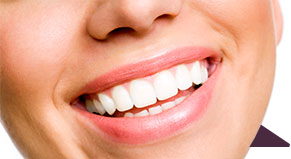Does Laser Gum Removal Treatment Hurt?
December 3rd, 2015
 After you’ve worked so hard to make your teeth shine, the last thing you want is for your gums to cover them up. A gummy smile can make your teeth look stubby and short. But underneath those gums is a gorgeous set of pearly whites. Laser gum removal, also called laser gum recontouring, can reveal your complete smile. And best of all, it’s virtually painless, so you don’t have to worry about the laser gum removal treatment hurting.
After you’ve worked so hard to make your teeth shine, the last thing you want is for your gums to cover them up. A gummy smile can make your teeth look stubby and short. But underneath those gums is a gorgeous set of pearly whites. Laser gum removal, also called laser gum recontouring, can reveal your complete smile. And best of all, it’s virtually painless, so you don’t have to worry about the laser gum removal treatment hurting.
Let’s take a deeper look at how exactly laser gum treatment can help your smile without hurting it.
How Does Laser Gum Treatment Work?
Back in the day, dentists used to use a scalpel to remove excess gum over the teeth. Needless to say, this was pretty painful and caused a fair amount of bleeding. Thankfully, laser technology has allowed cosmetic dentists to gently cut away and perfectly shape excess gums in a virtually painless treatment!
How does it do this? During the laser gum recontouring procedure, your dentist will numb your mouth with local anesthesic. This way, you won’t feel any discomfort. From there, your dentist will use the heat of a diode laser to remove excess gum tissue and shape a more uniform and smooth gum line that enhances the beauty of your smile. Lasers are incredibly precise and accurate, so the laser won’t target anything but the problem areas.
The treatment can be performed and completed in just one short visit to the dentists office.
What Are Laser Gum Recontouring Results Like?
After your laser gum recontouring treatment, your gums will be pulled back to a normal length and shaped to best compliment your teeth. Your smile should look better than ever! Take a look at our laser gum recontouring before and after pictures to see what Water Tower Dental Care’s results look like.
What’s Recovery Like?
Unlike scalpels, lasers cauterize, or burn, while they remove your excess gums. Though this might sound scary, it’s actually really good for your recovery! Cauterization means less bleeding and a massively reduced risk of infection.
Your gums may feel swollen or a little sore up to a week after your treatment. But this discomfort shouldn’t be too bad or interfere with your normal routine. Your dentist will give you a low-strength pain reliever to minimize discomfort. You’ll still be able to eat, work, drink and speak normally, but you’ll want to stick to eating soft food a few days after surgery.
Don’t wait to get the smile of your dreams. Laser gum removal can painlessly shape your gums to provide you with your most beautiful smile. If you’re in Chicago, look no further than Chicago’s #1 cosmetic dentistry for your laser treatment. Contact Water Tower Dental Care to set up an appointment with us today!


 Want to chew gum? Do it! As long as there’s xylitol in it, your dentist will approve. Xylitol is the perfect sugar alternative. Not only does it not cause tooth decay. It’s also good for your teeth. Yes, you heard that right. Something that tastes as wonderful as sugar actually benefits your teeth. Let’s take a look at why.
Want to chew gum? Do it! As long as there’s xylitol in it, your dentist will approve. Xylitol is the perfect sugar alternative. Not only does it not cause tooth decay. It’s also good for your teeth. Yes, you heard that right. Something that tastes as wonderful as sugar actually benefits your teeth. Let’s take a look at why.





 Website Powered by Sesame 24-7™
Website Powered by Sesame 24-7™